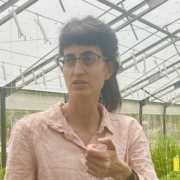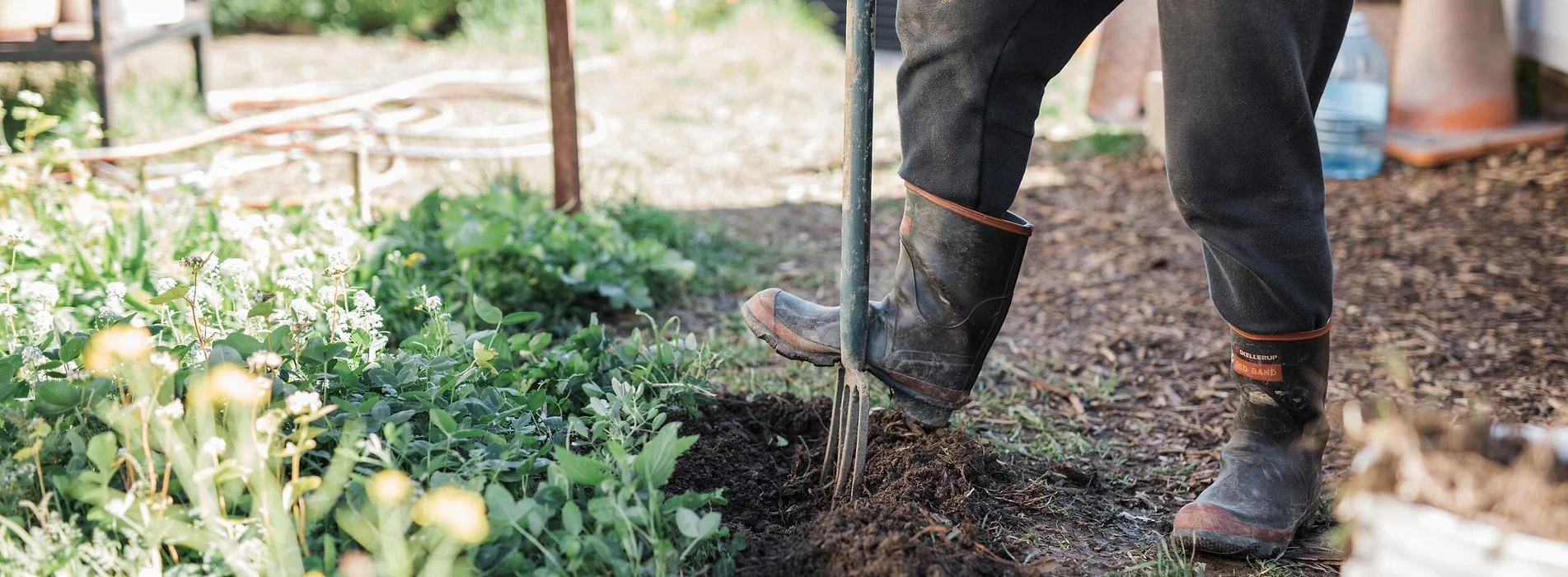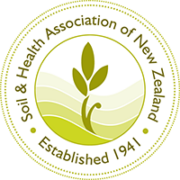Organics around the world
The demand for New Zealand organic produce is growing, reflecting the global trend. Local experts share their thoughts with Melissa Reid on how the sector can scale up to meet domestic and export demands.
There is an ever-increasing number of people who are becoming more attuned to where their food comes from. The demand for products that meet the health, environmental and ethical demands of conscious consumers is on the rise. Nowhere is this better reflected than in the global increase in demand for organic produce.
With a focus on protecting waterways, biodiversity, communities and helping to fight climate change, organic regenerative agriculture is recognised as a way of farming that offers solutions to these problems, and meets consumer demand for more environmentally friendly practices.
The growing global organics market
For over a decade, global sales of organic products have shown consistent year-on-year growth. In 2019, global sales of certified organic products reached €106.4 billion (NZ$187.26 billion).
Around the world, just 1.5 percent of all farmland is certified organic, but the total area looks set to increase because of government policies in a number of countries. Japan, for example, has a target of 25% of agricultural land to be organic by 2050 and some states in India are aiming to be 100% organic in the coming years.
In 2019, 72.3 million hectares globally were organically managed, up 1.6 percent or 1.1 million ha from 2018. New Zealand’s 5849 ha under organic certification is down 3.41% (3029 hectares) since 2017, but is set to increase again with approximately 6000 ha in conversion to organic.
Taking our products to the world
Aotearoa New Zealand is in a different situation from most other countries in terms of our agricultural focus.
“The New Zealand organic sector is targeted and designed for export, just like the rest of the agricultural sector,” said Rick Carmont, executive director of the Organic Exporters Association. “At 58%, New Zealand is the only country that exports most of its organic production. By contrast, Australia exports 26%, Denmark 19%, Sweden 10%, and the US less than 2%.”
The 2020/21 Organic Sector Market Report commissioned by Organics Aotearoa New Zealand (OANZ), shows that our organic agriculture sector’s value has increased by 20% since 2017 to $723 million, with market value split between exports at 58% ($421 million) and domestic market at 42% ($302 million).
There is significant demand for New Zealand’s organic products worldwide, with 81% sold into five markets in 2020: USA, China, Europe, Australia and Japan (see graph).
Top 3 countries (number of hectares)
- Australia: 35.7 million
- Argentina: 3.7 million
- Spain: 2.4 million
The global total is 72.3 million hectares, and New Zealand currently has 85,849 hectares.
Top 3 countries (organic producers)
- India: 1.3 million
- Uganda: 210,000
- Ethiopia: 204,000
Top 3 countries
(% of organic land)
- Lichtenstein: 41%
- Austria: 26.1%
- São Tomé and Príncipe: 24.9%
Top 3 regions
- Oceania: 36 million ha
- Europe: 16.5 million ha
- Latin America: 8.3 million ha
Half the world’s organic agricultural land is in Oceania due to Australia’s large area of organic pastoral farmland.
Supporting the growth of organics in Aotearoa
Meeting an ever-increasing demand for both domestic and export markets will require government support and a robust action plan.
Fortunately, two pieces of work can help make this happen: the Organic Products Bill and the Organic Sector Strategy Taking Action for a Better New Zealand.
Viv Williams, chief executive of OANZ, spearheaded the Organic Sector Strategy with input from a wider sector leadership group, stakeholders from across the local organic sector, and the assistance of MPI funding.
The sector strategy’s vision is to enable producers, communities and the environment to thrive through organics. The strategy outlines a roadmap that will contribute a cumulative $4.7 billion to New Zealand’s GDP by 2030 while reducing climate change and environmental pollution.
“Organics provides an established international market and brand,” said Williams. “When combined with the energy and vitality coming from the regenerative agriculture movement, organic regenerative can make a strong contribution to the future of farming as outlined in the government’s Fit for a Better World strategy. A future that is better for our environment, our farmers, and our communities.”
Pete Huggins, general manager of the Soil & Health Association, agrees that placing organics within government strategies would be a good start to strengthening the sector.
“Government acknowledgment of organics, like we’ve seen overseas, can open up new possibilities,” said Huggins. “Hopefully, a positive outcome of the Organic Products Bill process will be increased awareness and understanding of organics amongst decision-makers.”
Similarly, Rick Carmont wants to ensure the Bill is an advantage and not an obstacle for market growth.
“It will be an important instrument in continuing to grow and maintain our organic trade arrangements, and the Organic Exporters Association is a big supporter of it,” said Carmont.
Top 5 organic export markets
| USA | CHINA | EUROPE (EXCL UK) | AUSTRALIA | JAPAN | |
|---|---|---|---|---|---|
| Value | $86.8 MILLION | $81.8 MILLION | $73.4 MILLION | 66.4 MILLION | $31.5 MILLION |
| % of NZ organic exports | 20.6% | 19.5% | 17.5% | 15.8% | 7.5% |
At over USD55.1 billion, the US organic market is the largest destination (both current and potential) for NZ organics.
Hua Parakore: indigenous organics
Active support for indigenous food and growing knowledge is also key to sector growth. Aotearoa’s unique indigenous verification and validation system for food production – the National Māori Organics Authority of Aotearoa (Te Waka Kai Ora) – supports Māori organic growers and protects Māori food sovereignty. Te Waka Kai Ora has developed and implemented the Hua Parakore system, an indigenous validation and verification system for kai atua (Māori organic products).
“Māori food sovereignty is about returning to eat our cultural landscapes as food producers, kaitiaki and mana whenua,” said Dr Jessica Hutchings, Te Waka Kai Ora member and part of the Sector Strategy Leadership Team.
“It is imperative that Māori communities grow Māori food producers and food farmers to not only increase organic food production by Māori, but to place Māori at the centre of the food system as producers.”
Encouraging a clean, green future
Consumers around the world want to know where their food comes from and are increasingly looking for cleaner and greener products. Converting more farms to organic is desirable from both a sustainability and financial perspective. But with the EU’s target of 30% of agricultural farmland organic by 2030, New Zealand exporters should expect increasing competition in organic supply.
“The key for New Zealand exporters will be to differentiate and create value through innovation and leveraging our premium ‘pure NZ’ brand position,” said Andrew Henderson, general manager of Fonterra Organic. “Having the infrastructure, legislation and incentives in place will also be critical to ensure the simplicity and efficiency needed to be competitive globally, and to incentivise more farmers to convert to organic.”

More info
Download these reports from Organics Aotearoa New Zealand: oanz.org
- Time for Action: The New Zealand Organic Sector Market Report 2020/21
- Taking Action for a Better New Zealand: 2022 Aotearoa New Zealand Organic Sector Strategy
Read the Organic Products Bill on the parliament.nz website, or via bit.ly/31fpuTa.
A path forward for farmers
Organic regenerative agriculture is both an important pillar to Aotearoa’s sustainability story and, importantly, can provide a path forward for farmers. According to the OANZ market report, there are approximately 6000 hectares in conversion to organic.
“Some farmers are moving towards regenerative practice by themselves, but to get a step change we need to see national leadership,” said Pete Huggins.
“Government funding for extension services which support a shift to organics would help, especially if joined with transition support for farmers undertaking the three-year switch to organic certification. Underwriting this transition would reduce the risk for farmers and show that the government means business.”
The sector strategy focuses on extension services to support more growers to innovate on-farm and convert to organic farm practices, alongside collaboration with regenerative growers and scientists to deliver the best of both worlds.
“This strategy, built by the organics sector, provides valuable information on how we can address current challenges and tap into opportunities,” Williams concluded. “It’s a pathway forward for the growth of the sector.”




Melissa Reid is a freelance writer who lives in Auckland, and works for OANZ.







